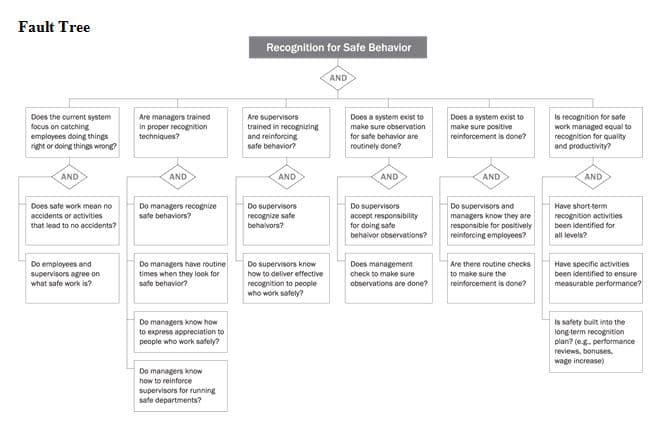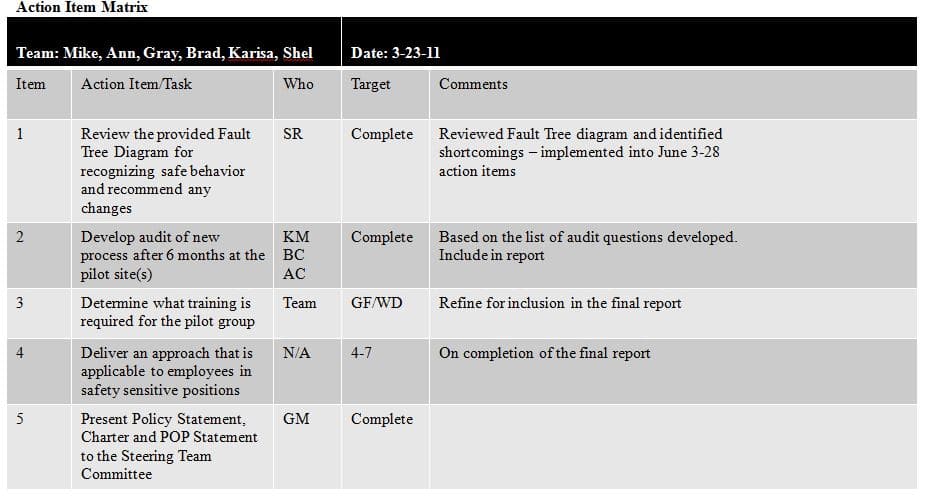Personnel
The Simple, Underused tool that Can Transform your Safety Culture
If you want something different, you will have to do something different. Organizations that have implemented a recognition system have helped transform their safety culture to a healthier level well beyond their previous reality.
Mike Williamsen, Ph.D., CSP
Recognition for doing things correctly seems to be a lost art. Over the years, I have assessed perception surveys for hundreds of organizations and tens of thousands of employees. As I tally the results, recognition for performance of doing things right is the lowest scoring safety management process. Interestingly, discipline (i.e., correcting people when they do something wrong) scores as the sixth lowest of the 21 safety management processes.1 So whether employees do the job right or wrong, they are pretty much left alone to figure out what they ought to do.
Indeed, improving recognition skills is one of the best methods for an organization to improve the way its employees communicate the important safety messages which help prevent injuries. During the development of the safety perception survey, there was an extensive effort to find a few questions that would audit the reality of a safety recognition culture in the workplace. The questions that were developed as the benchmarks are:
Is promotion to higher-level jobs dependent on good safety performance?
Is safe work behavior recognized by supervisors?
Are safe workers picked to train new employees?
Can first-line supervisors reward employees for good safety performance?
Is safe work behavior recognized by your company?
Armed with data from hourly, supervision and management employees who take the survey, a continuous improvement team made up of people from the front line and management meets to develop a process solution. Their charge is to develop their own recognition system based on safety accountabilities that are practiced every day across the organization.
Adopt A Coaching Culture
A common thread is that we have not trained our people well in the basics of human interaction. The symptom here is that we are not very effective in giving and receiving feedback on job performance, whether it is in safety, quality or production. A typical part of the team solution is to train all the personnel in giving and receiving feedback, and how to be effective in providing one-on-one recognition for doing a job well. The associated training and role play goes a long way to beginning a new culture of asking for permission to have the safety conversation, getting a commitment to live safe behaviors and following up in an adult manner.
In turn, this launches a coaching culture in which hourly and salaried personnel try to catch people doing things correctly. All too often, safety pros, supervision and management concentrate on what is wrong with little or no positive feedback for the overwhelming number of times all is well with safety. The end result is our people know more about what we don’t want than what we do want.
Think back to your coaching experiences, either as a player or as a coach. The effective coach watches what is going on and then intercedes where improvement is needed. This interaction is not punitive, but adult in nature. The player is shown what is correct and then demonstrates this back to the coach until both are satisfied the basic skills are in place. The coach then continues to observe and give positive feedback as the player demonstrates the correct skill. This approach includes:
A one-on-one event focused on what is correct
A commitment from the student to do the task correctly
A continual one-on-one follow-up on the skill in question
An adult approach to improving performance
A simple model that is used to teach new skills:
Define what needs to be done correctly
Train correctly
Measure how well the skill is performed
Give feedback on trainee performance
This approach is effective human interaction 101, but is seldom practiced in most safety cultures. Once the organization realizes the what, how, when and who, they almost always launch a successful initiative which significantly improves not only their overall safety culture, but other cultures within the company (i.e. cost, quality, customer service, etc.) as well.
Prepare an Improvement Plan
So let’s go back to the continuous improvement team that takes these fundamentals and develops an effective safety recognition culture. Start the team with a POP statement: Purpose, Outcomes, Process.
Purpose
Develop and deliver a positive and meaningful safety recognition approach that becomes the company’s way of life and improves safety performance in all that is done.
Outcomes (Deliverables)
Each manager and supervisor positively recognizes an employee daily
Each meeting starts with recognition of one positive employee action
Rush orders/production do not violate safety procedures
Employees do not perform unsafe acts
Managers and supervisors never require an employee to work unsafely
People are trained in the new system
Work on extinguishing actions that do not fit this new culture
Process (By Which this Will be Accomplished)
Through a one-week rapid improvement workshop, the team identifies key process changes, and delivers the final product to management for review. The new safety recognition system is then piloted in a work group before being rolled out to the rest of the organization. The team also uses a fault tree diagram to understand the basics of providing effective safety recognition/feedback (see Figure 1). As the team reviews each block in the fault tree, it develops action items through which team members execute the development of the new system. A condensed example of this is given in Figure 2. As the team does its development work, members go to the field and ask open-ended questions to find out what the front-line employees think would be effective recognition. Two examples of this are:
“How should employees be recognized for safety? What works and doesn’t work?”
“If you were in charge of safety, what would you do differently?”
A consistent reply from employees is along the lines of “Positive recognition is the most significant step our organization can take toward improved safety performance.”
Refine for Greater Rewards
Once the pilot test of the new recognition system is up and running, team members audit the process by asking open-ended questions of the pilot participants. Typical questions are:
What to do you think about the “See It, Say It, Live It” positive safety recognition approach? (i.e., frequent, timely, face-to-face engagement, sincere and focused on job content with confirmation)
Can you think of a time when you gave positive safety recognition and it went very well? What factors contributed to this experience?
The teams often come up with two types of recognition:
Planned: Quarterly and annual reviews
Immediate Recognition
Both are important, and when in the field, management must:
See It – Say It – Live It
Look for opportunities to provide immediate recognition
Time and again, organizations have found that immediate recognition provides the strongest reinforcement (see Recognition sidebar).
This may seem to be a very detailed approach to move your current culture to one of frequent positive recognition for jobs done well. In fact, this is true. If you want something different, you will have to do something different. Organizations that have implemented such a system have truly made positive recognition a part of their safety culture and involve all employees in the new process. In so doing, they have helped transform their safety culture to a healthier level well beyond their previous reality.
Dr. Mike Williamsen, Ph.D., CSP is a Senior Safety Consultant with Caterpillar Safety Services. To reach Mike, or for more information about positive safety recognition, Rapid Improvement Workshops, or training programs to enhance communication about safety, e-mail [email protected].
Note
As measured by the Caterpillar Safety Services statistically validated survey.
Sidebar
Recognition
Effective recognition has five characteristics:
Timely: When you see it, you say it
Relevant to the work being performed
Sincere
Confirmed by the person being given feedback
Frequent
Benefits are:
Increased confidence
Increased creativity in problem solving
Increased engagement in problem solving
Increased interactivity in work process
Positive overall attitudes
Better team morale
Improved safety culture
Zero injuries


